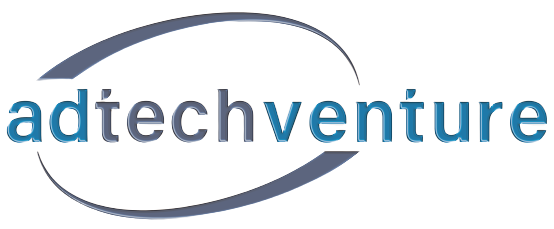FAQ
What is AdTech?
AdTech, short for “advertising technology,” facilitates the buying and selling of digital ads through various tools and software. It involves two main entities: advertisers (Demand-side) aiming for effective campaigns and ROI measurement, and publishers (Supply-side) generating revenue by displaying ads on their platforms. Companies like Kidoz bridge this gap, offering solutions that cater to the needs of both advertisers and publishers, ensuring a harmonious and efficient advertising ecosystem.
Kidoz generates revenue from Direct, Programmatic, and Performance AdTech campaigns.
Direct Agency Campaigns
In non-auction Reserved Inventory, a publisher allocates ad space directly to a known buyer or advertiser via Kidoz Connect, bypassing bidding. Ad inventory is pre-reserved at a fixed cost per mille (CPM), ensuring a direct and controlled ad placement between buyer and seller.
Programmatic Campaigns
Programmatic advertising streamlines the purchase of digital ad space using sophisticated technology and data, eliminating the need for manual ad size and rate negotiations. Algorithms and data analysis automate ad buying, ensuring efficient and data-driven ad placements for advertisers and agencies.
What is the AdTech EcoSystem?
Digital media buying in AdTech resembles the traditional media value chain but includes various ecosystem components. Key elements include advertisers, publishers, ad networks, demand-side platforms (DSPs), supply-side platforms (SSPs), ad exchanges, and data management platforms (DMPs). These components streamline advertising campaign management and enhance targeting and efficiency in the digital advertising space.
1. Advertisers: These are businesses or individuals looking to promote their products or services through digital advertising.
2. Publishers: Publishers are website owners, brand developers, or content creators who provide digital ad space on their platforms.
3.Ad Networks: Ad networks act as intermediaries connecting advertisers with a variety of publishers. They aggregate ad inventory from multiple sources to offer to advertisers.
4. Demand-Side Platforms (DSPs): DSPs are tools or platforms used by advertisers and agencies to automate the process of buying ads. They help in targeting specific audiences and optimizing campaigns.
5. Supply-Side Platforms (SSPs): SSPs are used by publishers to manage and optimize the sale of their ad inventory. They connect publishers with ad exchanges and demand partners.
6. Ad Exchanges: Ad exchanges are online marketplaces where advertisers and publishers come together to buy and sell ad space in real-time through auctions.
7. Data Management Platforms (DMPs): DMPs collect, store, and analyze data to provide valuable insights for targeting and personalizing ad campaigns.
These components work together to create a dynamic ecosystem that facilitates the buying and selling of digital advertising space, allowing for precise targeting, real-time bidding, and effective campaign management.
Glossary of terms:
SDK, a critical component developed by Kidoz, empowers safe advertising in brands. Brand developers integrate this module into their Brands, ensuring secure ad delivery to viewers. This technology safeguards user experiences and ensures responsible advertising practices within mobile applications.
1. SDK Definition: An SDK, or Software Development Kit, is a vital tool developed by Kidoz to facilitate safe advertising practices within mobile applications.
2. Purpose: The primary purpose of the SDK is to ensure that ads served within an brand adhere to safety and compliance standards.
3. Integration: Brand developers embed the Kidoz SDK into their applications, enabling them to manage and control ad placements.
4. Safety: The SDK plays a crucial role in maintaining a safe and appropriate advertising environment for Brand users, especially children.
5. Content Control: It allows Brand developers to have granular control over the type and content of ads displayed in their Brands.
6. Target Audience: The SDK helps in targeting specific audiences while ensuring that ads are age-appropriate.
7. Ad Filtering: It filters out any ads that do not meet the specified safety and content criteria.
8. Compliance: The SDK ensures that ads comply with legal and industry regulations, particularly in child-directed brands.
9. Monetization: While prioritizing safety, it also enables brand developers to generate revenue through advertising.
10. Customization: brand developers can customize ad experiences to align with their brand’s design and user experience.
11. Reporting and Analytics: The SDK may provide data and analytics on ad performance, helping developers optimize their ad strategy.
12. User Experience: Ultimately, the SDK enhances the overall user experience by ensuring that ads are relevant, safe, and well-integrated into the brand environment.
Ad Types:
Display Ads: Display ads are visual advertisements that appear on websites and mobile brands. They can include images, text, and sometimes interactive elements. Display ads are often used for brand awareness and can be targeted based on user demographics and behavior.
Video Ads: Video ads are short video clips that play before, during, or after online content such as videos or in-brand experiences. They are effective for conveying messages and engaging viewers. Video ads can be skippable or non-skippable, and they come in various formats, including in-stream and out-stream.
Native Ads: Native ads are designed to blend seamlessly with the content of the platform on which they appear. They match the look and feel of the website or brand, providing a non-disruptive and user-friendly advertising experience. Native ads are less intrusive and can enhance user engagement.
Search Ads: Search ads are text-based advertisements that appear on search engine results pages (SERPs) when users enter specific keywords or phrases. They are commonly used in pay-per-click (PPC) advertising and are highly targeted based on user search queries. Search ads are effective for driving traffic to websites and capturing user intent.

